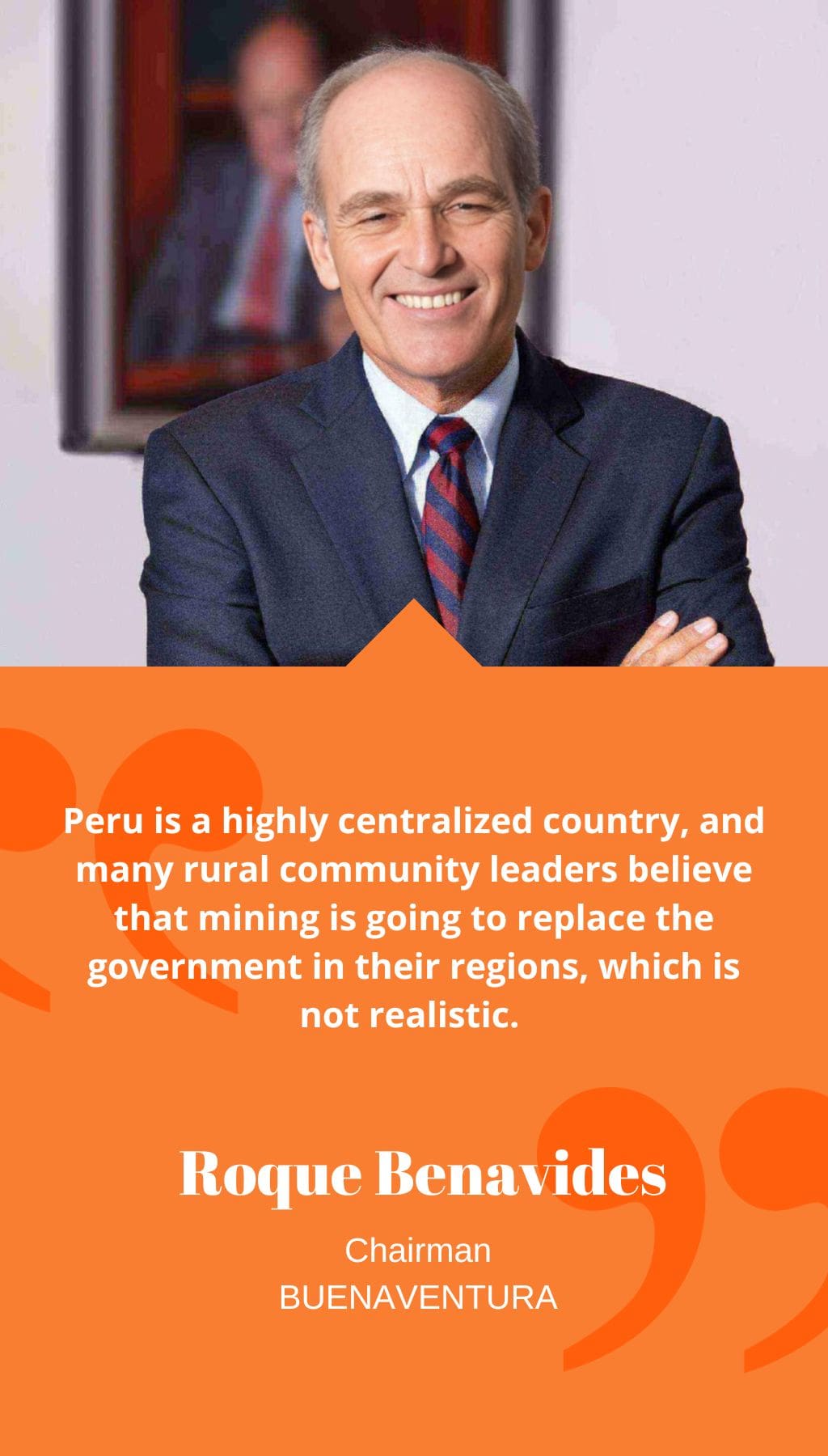
- Peru | 20 May 2021

What is your opinion on the current political situation in Peru?
Politicians in Peru are not much different from politicians in other parts of the world. They make promises but do not realize that there are checks and balances in place, such as the confirmation of Congress in the case of Peru. The Peruvian system requires dialogue to reach consensus, and turning campaign promises into actual legislation is not always easy. Nevertheless, there are some independent institutions in Peru that function well, such as the Peruvian Central Bank, which serves as an economic advisor to the country.
In order to make decisions about political issues in Peru, it is important to evaluate the country’s competitiveness in areas such as taxation and permitting procedures, comparing them to leading mining jurisdictions like Canada, Australia, and Chile, which have been more successful in attracting investment. As a private sector representative, I hope that common sense will prevail, and we are actively working with politicians to persuade them that this is the best way forward.
Why do you think there is negative sentiment towards the mining industry in some regions of Peru?
There are several reasons why some people in Peru have negative views towards mining. One of the reasons is that people have high expectations, and the government often plays a role in creating unrealistic expectations. For example, when Mr. Vizcarra was the Minister of Transportation, he promised to build a paved road for the Cotabambas community, but it never happened. This has led to years of conflict, with the mining company being blamed.
Peru is a highly centralized country, and many rural community leaders believe that mining is going to replace the government in their regions, which is not realistic. Furthermore, the lack of management skills at the national, regional, and provincial levels of government is a major issue in Peru. As a result, the private sector needs more dialogue to present and convince local communities of the benefits of mining, but the government authorities do not always help in this regard. However, we need to be critical of ourselves before criticizing others, and as an industry, we can do better.
What steps can Peru take to stimulate exploration and reverse the downward trend in gold production?
Exploration in Peru requires as many permits as putting a mine into operation, which is absurd. Obtaining a permit to drill can take six to eight months, whereas in Mexico, it takes only three weeks. Mining companies have a responsibility to convince the authorities that exploration is research, which does not have a significant impact on the environment and provides a wealth of information. In Peru, all the deposits that are currently being mined have outcrops on the surface. Therefore, it is crucial to explore deeper to discover hidden, deep deposits. Many world-class deposits have been discovered at depth in other countries, and Peru still has much to discover.
What is the current status of the San Gabriel project, and when do you expect it to start production?
The San Gabriel project is at the end of the permitting process. We started the prior consultation process two years ago, and we have continued to meet with local communities. The government supports the development of the project as part of Peru’s economic reactivation after COVID-19. The authorities always refer to San Gabriel when discussing active projects in Peru’s development pipeline. We are currently evaluating the possibility of using solar power for San Gabriel, which has an ideal location to benefit from such an energy source. The mine should be in production by 2023.














